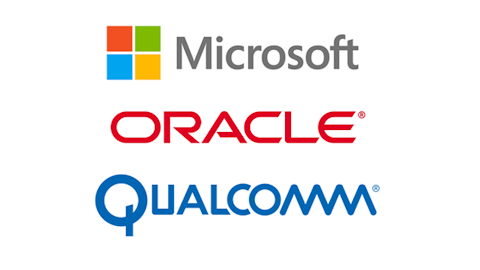Is Disney a good stock to buy right now? Those hedge funds that were long The Walt Disney Company (DIS) in 2015 earned their “smart money” labels as the stock has climbed 29% during the year and 9% in the last three months. The bullish stance by funds on DIS was evident in their increased investment in the company’s shares, going from 58 funds holding $3.6 billion in DIS stock at the end of 2014 to 64 funds holding $4.37 billion in DIS stock at last measure. Funds’ new filings will come in the next few weeks, and we expect that the number of funds in Disney will have increased for a number of reasons including momentum, growth, and value. Funds with investments in DIS included Fisher Asset Management with 8.4 million shares; Landsowne Partners with a position just shy of 8.4 million; and Diamond Hill Capital with about 2.6 million shares. Columbus Circle Investors’ new position of over 873,000 shares put it in the top ten holders among funds and was well-timed as pointed out above. Our research shows that following the long positions of funds can shed light into the future performance of stocks (see the details here). We believe DIS still has room to run even with the increases during the year, and the latest smart money investment will likely show that in the coming weeks.

DIS Has Strong and Diversified Holdings
DIS is one of the world’s most recognized entertainment brands. The company’s enviable and diversified assets include the cable networks Disney Channel, ESPN and ABC Family; the Lucasfilm and Marvel franchises; as well as its own iconic Disney-branded businesses. Along with a higher than industry average revenue growth rate, for the last 5 years DIS stock price has increased steadily, capturing an impressive $203.6 Billion market cap, as well as a 52-week high of $120.72 price per share.
DIS’s enviable portfolio of assets and operations are extremely diversified and touch virtually all aspects of the entertainment media industry. The entertainment conglomerate has operations in five segments: studio entertainment, media networks, parks and resorts, consumer products and interactive. With its distinct and complimentary media networks and Disney-branded businesses, DIS assets should continue to be consistent sources of revenue streams for years to come.
ESPN accounts for 56% of DIS total profits. ESPN has steadily dominated the United States sports entertainment industry and has consistently been in favorable bargaining positions that have allowed it to negotiate the highest subscriber fees paid to any cable network. In addition to the revenues generated from advertising, licensing and subscriber fees – ESPN also benefits from having exclusive programming rights to both U.S. college football and NFL games. DIS’s ESPN holdings extend beyond just the flagship ESPN channel, and include the sister channels ESPN2, SEC Network and ESPN Classic, as well ESPN.com, its sports news website.
In the past few decades, Disney Channels has become an important platform, allowing the company to monetize and distribute Disney-owned franchises and characters across multiple mediums including movies, television shows, theme parks, musicals, and merchandising. Disney Channels serves a dual purpose of maintaining brand recognition, while also allowing Disney to both introduce and extend its existing and strong entertainment content and intellectual property portfolio. Both ABC Family and the Disney Channels operate under a favorable economic structure by offering both new internally generated content, while also being able to rely upon and exploit Disney’s already massive library of existing entertainment content.
The Disney-branded businesses provide revenue from multiple sources including from Disney theme parks and consumer products, as well as from its filmed entertainment sector. Disney’s world famous theme parks include the Disneyland Resort in California, Walt Disney World Resort in Florida, and in 2014 there was a 7% revenue increase from this division. Opening in spring 2016, the brand-new Shanghai Disneyland, which will become the first Disney resort on mainland China, should present increased revenue opportunities, and only further increase DIS’s brand recognition and global reach.
The consumer products division offers one of DIS’s most impressive and long-term sources of multiple revenue streams. This division provides licensing for DIS-owned characters, trademarks and other intellectual property, and is heavily involved in the online, retail and wholesale distribution of its various Disney-branded products. Over the past 10 years, the increased and diversified availability of multiple interactive media platforms has provided the company with additional avenues for distributing and licensing Disney products and media content.
Many predict that Disney’s acquisition of the Marvel, Pixar and Lucasfilm brands makes the company poised for inevitable market and box office domination. In fact, Marvel, which has already produced strong box office returns, has new movie releases scheduled for every year until 2020, and at the end of 2015 Lucasfilm will be delivering its strongly anticipated new Star Wars movie.
DIS Reliance on Cable Network Revenue Raises Some Concerns
While many investors have highly anticipated the potential gains from Disney’s upcoming box-office film releases, the reality is that Disney’s movie division only accounts for about 12% of its profits. Furthermore, box-office movie success can be hit-or-miss, which raises the potential for varied degrees in profitability from the DIS studios segment in the near future. Many of the films it releases are derivatives of established brands, however, and the downside stems mostly from subdued profitability than out-right losses on projects.
Currently, ESPN accounts for over 50% of total profits, and charges the highest affiliate fee of any basic cable channel. This concerns those who have closely watched the rapidly changing media landscape, as consumers have increasingly turned away from the traditional subscription cable model because of persistent increases in services rates, in favor of less-confining and more affordable media streaming services. If streaming services continue to cannibalize the traditional cable network market, Disney Channels and other DIS cable assets could suffer from decreasing revenue from subscriber, licensing, advertising fees. However, it is important to note that unlike traditional cable networks, streaming services have had some difficulty increasing their market share in the sports entertainment industry given this medium’s difficulty with delivering the live, real-time sports coverage that fans desire.
What to Expect in the Future
We feel DIS is a good investment because of the longevity that its brands have shown and the various ways in which its brands can be utilized through film, video, television, clothing, toys, and so on. Though it is heavily dependent on its cable network channel revenues, it has other impressive sources of income including new high-profile acquisitions and products that should return impressive revenues in the near future. For those looking to invest in the entertainment industry, DIS is a great choice, trading at only 21 times forward earnings for a company with better prospects than the average company and growing faster than the aggregate economy. DIS’s run over the last few years has been amazing, but there is no reason it cannot continue as DIS appears to be fairly priced in a market some believe carries a frothy valuation.





